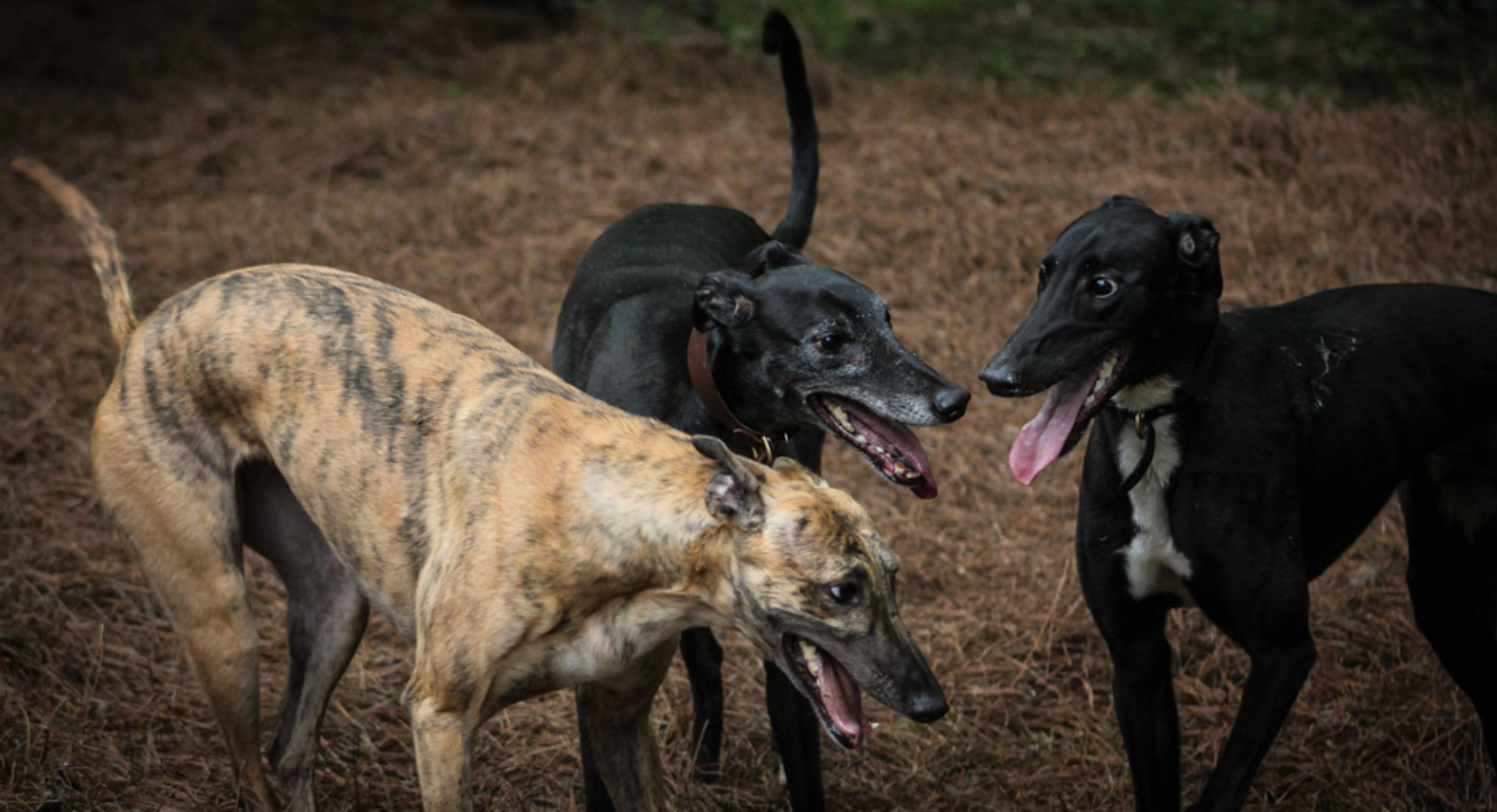When you mention Greyhound racing in a conversation you are likely to receive an emotional reply. No matter which side of the argument people are on they are steadfast in their opinion—it seems to be a topic similar to religion and politics that is more enjoyably discussed with like company. I fall on the pro racing side of the argument. My journey to shape my opinion was based on facts and my personal experiences.
Many people love racing Greyhounds. Greyhounds are a social media sensation; for example, #Greyhound currently has 1.2 million posts on Instagram. People find these dogs charming and want multiple in their homes due to their exceptional temperaments. At the same time many of these Greyhound lovers want to end Greyhound racing.
If you have been around different types of Greyhounds you can see that there is something different about a retired racing Greyhound. It has to be from their raising. Racing Greyhounds are raised on farms and stay with their mother and littermates longer than most other dogs. Once they are about 12-16 months they are trained for the track and spend months learning how to maneuver an oval track. I own both retired professional racing National Greyhound Association (NGA) greyhounds and a NGA Greyhound that I raised. I love all my dogs, but there is something special about the retired racers, something that I have aimed to recreate in my pup.
Some Greyhound lovers have bought into the propaganda that animal rights (AR) groups promote about Greyhound racing. However, ending Greyhound racing has not been an easy task for these groups. AR groups began focusing on legislators and legislation with their emotionally compelling but inaccurate information. Many AR groups lobby for decoupling of Greyhound tracks. What is decoupling? Decoupling is splitting the Greyhound tracks from casinos. In certain states casinos cannot operate unless they are connected to a racetrack. This allows the Greyhound track to share revenue with the casino to help with their payouts.
Without the revenue from casino sharing profits it would be difficult for Greyhound tracks to pay out their purses—tracks get a small percentage on the dollar from casino revenue. Meaning that this legislation would essentially end Greyhound racing and breeding in states with decoupling.
It seems that in our quest to do the best by our dogs we have missed the big picture. We have begun to only see the Greyhound as just a social media phenomena couch potato and not the lord of all hounds. Phenomenally fast and efficient hunters, we have forgotten the Greyhound’s roots. In our slip of memory we have effectively sensationalized inaccurate propaganda about Greyhound racing.
Without the standard of performance professional racing achieves, what do we breed to? What happens if Greyhound racing completely ends? Suggesting that someone would buy a Greyhound from a breeder not committed to the training or the performance standard the racing Greyhound is held to is a misinformed statement. The racing Greyhound is unique and something that is extremely difficult to recreate.
If you admire Greyhounds for their athletic abilities, personalities, and abilities to co-exist with other Greyhounds easily and you are anti-racing you may want to rethink your position. Dogs like retired racing Greyhounds are not easy to come by and there is a reason why. Raising a racing Greyhound takes a lot of work and does not happen overnight but is an ongoing process throughout the Greyhound’s professional career. Greyhound farmers, breeders, and trainers put a lot of work into that special hound on your couch.






























